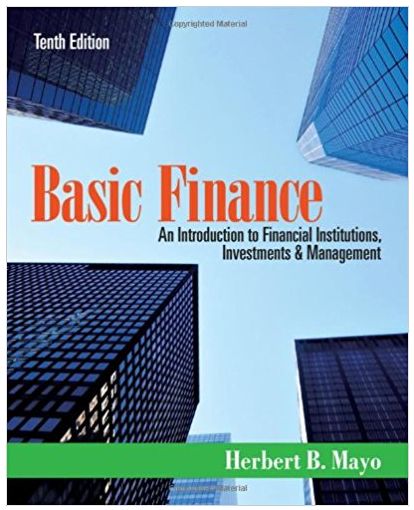Joseph Berio is a loan officer with the First Bank of Tennessee. Red Brick, Incorporated, a major
Question:
Joseph Berio is a loan officer with the First Bank of Tennessee. Red Brick, Incorporated, a major producer of masonry products, has applied for a short-term loan. Red Brick supplies building material throughout the southern states, with brick plants located in Tennessee, Alabama, Georgia, and Indiana.
Mr. Berio knows that brick production is affected by two factors: the cost of energy and the state of the building industry. First, manufacturing bricks uses a significant amount of energy. Red Brick, Inc. has recently converted many oil-fired kilns to coal kilns, which are cheaper to operate.
To finance these conversions, the company has recently issued a substantial amount of long-term debt that must be retired over the next 25 years.
Second, brick sales are very sensitive to activity in the building in dustry, especially new housing starts. The industry frequently follows a pattern of boom and bust, with sales and earnings responding to changes in the demand for building products.
Currently the economy is experiencing a severe recession, and housing starts have fallen more than 40 percent from the previous year. While the south and southwest have not experienced such a severe decline, housing starts there have declined 25 percent.
Red Brick, Inc. has not been immune to the economic environment.
Sales have declined, and although the firm has reduced production, inventory has increased. The firm needs the short-term loan to finance its inventory. Mr. Berio must decide whether to grant or deny the loan.
Such loans have been made to Red Brick in the past and have always been repaid when the economic picture improved.
The firm's income statement and balance sheet are given in Exhibit 1.
Exhibit 2 presents both a ratio analysis of Red Brick's previous year's financial statements and the industry averages of the ratios.
To help decide whether to grant the loan, Mr. Berio computes several ratios and compares the results with the ratios given in Exhibit 2.
a. What strengths and weaknesses are indicated by this analysis?
b. What may explain why the debt ratio exceeds the industry average? Is that necessarily a weakness in this case?
c. As a banker, is Mr. Berio more concerned with the firm's liquidity or its return on equity?
d. Based on the above analysis, should Mr. Berio grant the loan? Justify your position.
EXHIBIT 1
-1.png)
E X H I B I T 2
-2.png)
Financial statements are the standardized formats to present the financial information related to a business or an organization for its users. Financial statements contain the historical information as well as current period’s financial...
Step by Step Answer:

Basic Finance An Introduction to Financial Institutions Investments and Management
ISBN: 978-1111820633
10th edition
Authors: Herbert B. Mayo





